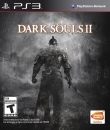Fans of the Shin Megami Tensei Series or turn based Japanese RPGs rejoice! Persona 3 shipped today and it should be at a store near you by tomorrow at the latest.
For those of you unfamiliar with the game, it's a turn based RPG that strays from the usual cliche territory of other JRPGs. It's not cutesy, it's much darker than the usual JRPG and Persona 3 specifically has a social sim aspect to it.
The story is focused on students who go through normal day by day school affairs during the day then at midnight go off into a dungeon and do battle agaisnt various demons and creatures using the power of their personas (their personal demons and creatures).
The Shin Megami Tensei series in general has been known for its more adult themes and darker subjects than other JRPGs out there. This game, like other games in the series has a very distinct art style that gives it lots more personality and makes the game look quite good even in the face of games with much better graphics.
Screenshots:
![]()

![]()

![]()

![]()

![]()

![]()

![]()

![]()

This is a thread dedicated to the game and people playing it. I'll post reviews and info on the game as it comes. Whoever is planning on buying or playing this game any time soon, post your impressions and experience with the game as you get it.
Reviews:
IGN.com
http://ps2.ign.com/articles/807/807769p1.html
Most RPGs feature deep, engaging gameplay that spans dozens of hours, intriguing characters and tons of battles. But very few role playing games have brought up as many complex and adult concepts as the Shin Megami Tensei franchise. Everything from alternate dimensions and questions of sanity to the occult and supernatural experiences has been fair game in these titles, making SMT one of the more mature series available. Soon, Atlus will be bringing the latest installment of its offshoot franchise, Shin Megami Tensei: Persona 3, to PS2s. How well does Persona 3 live up to the rest of the series?
Players take on the role of a nameless junior transfer student that's arrived in Tokyo to attend the institution of Gekkoukan High School. While everything seems fine at first glance, your character quickly finds out that things are horribly wrong at the school and in the city of Tokyo. Apparently, every night at midnight, the world finds itself stuck between other dimensions in a phenomenon called The Dark Hour. At this time, humans are transmogrified into coffins and strange beasts known as Shadows roam the land looking for people to feed upon. However, a select group of people (including your character) can avoid this imprisoned fate at midnight, fighting the Shadows from attacking people using special abilities known as Personas, manifestations of a character's psyche. Fortunately, this group also attends your high school and is known as S.E.E.S. - The Specialized Extracurricular Execution Squad, whose entire purpose is understanding and eliminating the Shadow threat from the world.
Unlike previous Persona titles, the action within the game is split up between daytime and nighttime activities, all of which move rather quickly over the course of the game's school year. During the day, you'll be attending classroom events, such as studying subjects, answering questions that your teachers pose to you and other educational activities. Successfully performing these duties will add points to your charm, academics or courage stats, which will help you build skills that you'll use along the course of the adventure. However, you're also spending the days talking to other students, making friends, joining clubs and even gaining girlfriends. There are lots of people to talk to, but you can only dedicate your time to one person or group at a time. As a result, you'll often find that many of your days after school are frequently torn between choosing who you want to interact with, while frequently feeling as though you're not fully gaining insight into anyone in particular. In fact, there were some school days I found my character having to decide between at least five separate people that wanted my attention, which left me feeling as though I could never satisfy any of these friends. The plus with this situation, however, is that it encourages replaying the game to see what different outcomes you can acquire by befriending different people.
Even though the large amount of life/dating sim elements may be somewhat distracting to most Persona or Shin Megami Tensei fans who are only interested in the role playing elements of the game, there is a very important reason behind trying to become so popular at Gekkokan High. Every person or group you befriend will let you build what's known as social links, which are broken up along Tarot card lines. As you strengthen these links, you are allowed to create and summon new Personas that belong to that particular Card. For instance, speaking to someone online will give you access to the Hermit class of Personas, while talking to people in the Student Council may unlock the Emperor class for your character. This is important, because your character is somewhat of an anomaly when it comes to S.E.E.S. members - whereas they're only able to summon one Persona in battle, your character can summon and hold multiple beings within his psyche.
These Personas come with their own individual talents and skills, as well as elemental preferences. For example, the Angel Persona is associated with wind, while Omoikane is an electricity based Persona. However, they won't remain with these skills for long. Players will be able to strengthen their Personas in battle, allowing them to boost their individual stats as well as acquire new abilities. As a player winds up using a Persona more and more, they'll find that being's abilities evolving into new traits that can be employed in battle. Characters looking for even more powerful Personas can take advantage of the Velvet Room, which allows players to combine multiple summoned characters into one new Persona. Depending on the characters you mix together, you'll unlock new skills.
There are a few things that you have to be aware of when it comes to Personas, however. It can be somewhat difficult to figure out what skills you happen to be gaining when a Persona gains a level or is combined into a new entity. The game doesn't provide descriptions of the various abilities on the Persona's character page, which can be somewhat confusing. For instance, if you saw Bufu and Posimundi, would you actually know what those powers were supposed to be in a battle situation? Probably not. However, this is the only info you'll receive on the Persona's info screen. While you can discover what these do via the Skills menu or in battle, it can be somewhat confusing when you're trying to figure out what you need in the middle of a fight and you can't really gain the info you need because all you're shown are skill names. As a result, you have to memorize what abilities you constantly use if you're going to be successful in battle. The same could be said of the evolution of skills, because you don't have any control over those whatsoever, meaning that you'll randomly receive some skill (often that you've never heard about) that you'll need to take into battle. This can be extremely confusing, particularly when you set out to take on the Shadows at night.
During the night, specifically during The Dark Hour, you can take on the Shadows in Tartarus, a labyrinthine tower that mysteriously erects itself on the grounds of the high school. Broken up into different themed areas known as blocks, Tartarus is the main "dungeon" that your party will crawl through as you attempt to eradicate the threat. You won't be able to continually enter Tartarus night after night, because each time your party enters its halls, they run the risk of becoming exhausted due to the amount of evil in the walls, which makes them vulnerable to attacks. Each floor within a block is stocked with items and Shadows, who will attack on sight. Since you can see these creatures, you can attempt to gain an advantage in battle by striking them or sneaking up on them and landing the first blow.
While the gameplay takes on a traditional turn-based affair once you get into battle, you'll find that there are a couple of twists to this standard formula. The first part of this revolves around exploiting enemy weaknesses. Players can scan Shadows, trying to find what elemental or physical flaws they have so your party can land extra damage. Successfully striking these beasts in this manner will frequently knock them to the ground, incapacitating them for a while and providing you with an extra attack in battle, which can be used to finish that monster off or focus on other creatures. What's more, knocking down all monsters during a fight will allow you to perform an All-Out Attack with every member of your party at the same time, which can't be defended against. The other twist that the battle system provides is a rush feature that lets you speed through battle sequences, automatically triggering all party members to attack without any user input, which can be useful for charging through meaningless monsters or fights that you can easily win.
However, the battle system also has a couple of issues that wind up cropping up and hampering the overall experience. Unlike other turn-based games, you'll only control your main character; your party members are governed by AI commands that you can establish, such as conserving your skill points or acting freely. For the most part, your characters will act intelligently, using their abilities at the right time or healing characters that need help. However, because you don't have full control over the other members in your party, you'll find some moments of frustration. For instance, if you happen to die, the game is over, but you may find that your AI won't focus on your needs every now and then, which may force a restart. What's more, you may find that they'll stop using their skills during an "Act Freely" command, which doesn't particularly help when it comes to eliminating enemies that are weak against specific elemental abilities. As a result, you may find yourself trying to do everything possible that you can during your turn, because you might not receive the result you want from your allies.
At least the end of some battles gives you much more than the standard experience and spoils scene. Depending on the monster you defeat, you'll receive a chance to select a tarot card from a number of cards on screen. Similar to a three card monte game, the cards will shuffle about, allowing you to select the one you want once they've stopped moving. Not only will players be able to gain new personas in this way, they can acquire new items, money, experience points or even heal their party in this manner. Gamblers even have the chance to double their luck by putting their won card up against higher stakes. However, there are some dangers: players can lose all of their earned cards or even receive a cursed card, which summons Death to relentlessly track your party through the halls of Tartarus. It's a creative twist on successfully beating monsters.
Persona 3 is a solid title graphically. While the game doesn't visually raise the bar of the PS2, it's nevertheless impressive, if for no other reason than the game has some of the most striking monsters you'll face off against in an RPG. Beheaded dancers wielding fencing foils, tables that are flinging pans and utensils, as well as walking gloves are only some of the basic creatures you'll fight your way through. The Personas are pretty creative as well, with everything from unicorns and scantily clad women to brain stems with eyes and moving wisps of hair. But perhaps the most arresting, and potentially disturbing, visual of the game revolves around the summoning of the Personas thanks to the use of the Evoker pistol. With all of your party members "shooting" between the eyes or their temples to summon their entities and recoiling from the impact of the action (with shattered glass replacing the expected brain matter, thankfully), this is one of those animations that's both intriguing and shocking at the same time. This isn't one of those titles you'll want to play when someone impressionable is in the room.
The title is supported by a ton of voice acting, and for the most part, the dialogue is pretty good. There are some lines that fall flat, as would be expected, but you get a good sense of many of the characters because of their chatter as you move through your school day or in the midst of battle. Whether it's the inclusion of the Japanese honorific tenses or the arguments that characters get in, you really get a sense of everyone's personality in the game (appropriate considering that the game is called Persona, right?). The music manages to support this as well, although it's a bit weaker. A mix of rap, beats, lyrics and other compositions, you'll find that the game typically uses and reuses the same track over and over again. As a result, you'll probably find yourself tiring of the battle theme or the school theme, for example, because it feels as though you've heard that same loop for the past five minutes or more.
Closing Comments
Amazingly deep, with tons of replayability in both the dungeon crawling and social link directions, Persona 3 is an incredibly engaging title. The RPG stumbles in a few ways that might make some fans of the genre stay away, because of the lack of full party control and the confusion that can surround the Personas. However, if you can put up with these issues, you'll find an enjoyable title that will show itself as one of the better games released on the PS2 this year.
| 8.5 | Presentation The title does a pretty solid job of Japanese culture, high school life and role playing exploration. |
| 8.0 | Graphics While it's not a massive stretch visually, the game showcases some arresting visuals and animations. Shooting your temples, anyone? |
| 8.0 | Sound The voice over dialogue is pretty good. The music, on the other hand, can be somewhat repetitive and over looped. |
| 8.0 | Gameplay Personas are a bit too confusing and the lack of full party control can suck, but otherwise, the gameplay balance of life/dating sim and RPG is impressive. |
| 8.5 | Lasting Appeal There's lots of replayability, whether it's gaining Personas, exploring Tartarus, or redoing your social links, as long as you can put up with some of those game mode flaws. |
| 8.3 | OVERALL
|
Gamespot.com
http://www.gamespot.com/ps2/rpg/persona3/review.html?om_act=convert&om_clk=gssummary&tag=summary;review
The PlayStation 2 may have reached its twilight years, but there is no shortage of great games being released for it. Enter Persona 3, the latest in the Shin Megami Tensei series to reach American shores. Luckily, you won't need any previous experience with the Persona franchise to appreciate its uniquely dark sensibilities, though series fans will find plenty of familiar references in which to revel. This is a quality role-playing experience that weaves distinctive gameplay elements into a fascinating story that unfolds slowly but keeps you constantly guessing. It's also atypically mature, but then again, any game that features your party members repeatedly shooting themselves in the head isn't for the squeamish. Indeed, the game's signature mechanic is this: To summon your inner self--or persona--you point a pistol at your head and pull the trigger.
At the outset of the game, you name your character, who has just transferred to Gekkoukan high school. But it's clear that not everything is kosher at the seemingly average campus. Mysterious creatures called shadows are threatening the locals, spreading an enigmatic disease called apathy syndrome that leaves their victims as listless as the name implies. However, their activity is generally confined to the dark hour: an hour sandwiched between midnight and 1 a.m. Most people are oblivious to this hour, while others are distinctly aware of the creepy dark hour in which the undulating gloom seals most of humanity in gothic coffins. Those unseemly heroes are in touch with their personas, which can be summoned to fight shadows in the realm of Tartarus, where most of them are restricted. At Gekkoukan, known persona users have created the Specialized Extracurricular Execution Squad and are determined to wipe the shadows off the face of the earth.
Saving humanity isn't a new concept, but you'd be wrong to assume that Persona 3 is limited to such a pat description. Instead, the gruesome nature of the dark hour is offset nicely by Persona 3's more traditional boarding school setup, in which your character attends classes, plays sports, and joins the student council. You have the opportunity to establish a good number of relationships with many of the inhabitants of the gameworld, from a love-struck classmate to the injured kendo team captain. Each of these inhabitants has a story of his or her own, and you will find yourself feeling involved with their struggles, no matter how seemingly insignificant. However, your school day meandering and extracurricular activities are more than just contrasting gameplay: How you spend your time here directly affects your combat performance during the dark hour.
This occurs in one of two ways. The more obvious way is to increase your stats by performing activities that directly affect them. For example, studying before bed or at the library will increase your academics, while watching chick flicks at the local theater increases your charm. The other aspect of your school day is your burgeoning relationships. The friendships and romances you build directly affect the personas that you summon in battle because each persona is strengthened by the associated social link. For example, a prospering friendship will earn you the blessing of the magician arcane, which means all personas associated with that arcana will benefit. But you have limited time each day to pursue those interests, so you need to spend your time wisely and concentrate on the activities that build a character that best suits your gameplay style.
Once you've finished tooling around school and town during the day, it's off to Tartarus for the dark hour, though you aren't forced to head there most nights, if you'd rather study or rest up instead. Tartarus is essentially a multistory skyscraper in which you climb from one floor to the next, defeating enemies as you gradually level up to handle the foes on floors above. You can take up to three other party members who have various strengths and weaknesses with you, yet unlike in most other role-playing games, you have no direct control over them. However, you can set up general tactics for each one if you like, such as support/healing. This may seem limiting at first, but as you earn more and more personas for your own character, you'll find that it's intimidating enough handling them all without adding three others to the mix.
You've got standard weaponry handily doled out by a sympathetic cop, but the bread and butter of your turn-based battles are the personas themselves. Each one brings with it any number of skills, and to use them, you first need to activate that particular persona. Once you have the right one in place, you select the spell to use, choose your enemy, and shoot yourself in the head. Granted, it's not a real pistol you use but an instrument called an evoker. Still, you can see shards of your soul flying from your head every time, and it's as macabre at the end of the game's 50 hours as it is the first time you do it. Most foes have a particular weakness that can be exploited with a particular persona skill or a critical hit from your standard weapon. Most of the time, hitting an enemy's weak point in this manner knocks it down and earns you an additional turn. If you manage to knock down every enemy, you can then activate an all-out attack, which sends your party into a hysterical-looking, cartoonlike skirmish, complete with comic book "thwaps" and "bams."
You will initially find new personas as loot, though after-battle goodies are handled differently than in most RPGs. In Persona 3, you choose from multiple potential rewards, which are shown onscreen as cards and then shuffled Three-card Monte style. This allows you to choose the one you want as long as you paid close attention to where the desired card ended up. But once you earn a couple personas, you are able to fuse them together by making a trip to the velvet room. The velvet room is presided over by a mysterious old man and friendly young woman; its existence is one of the game's many secrets. But once inside, you can combine two or three personas into a brand-new one of much higher level. There is a bit of mystery to this process because you don't necessarily know exactly what spells this new persona will brandish, but it will generally be a big improvement over the lost ones. Still, there is always a risk when fusing personas. For example, one of your personas may be your only source of an important healing spell, and you won't know exactly what abilities a persona brings to the table before fusing it.
Fusing personas and developing their linked relationships can be an intricate affair. However, Persona 3 is somewhat simple at its core, and you may find that the game's main structure a little tedious. You'll spend the day increasing skills and developing relationships, the pace of which is halted by frequent loading times, then return to the dorm to set up the night's foray into the dark hour. The hallways of Tartarus also get monotonous because each hallway ends up looking more or less the same. Thankfully, the occasional repetition is broken up by multiple story elements that get you into combat away from Tartarus. Yet there is a certain amount of grinding inherent to the game because each section of Tartarus is broken up by a boss character that must be defeated to move forward. If you aren't strong enough to handle it, you will need to revisit floors you've already explored countless times until you can manage. In fact, you'll need to backtrack a lot as it is because you cannot just enter on any floor but only on floors you've managed to climb to and activate a portal. This often means that you'll be running through the same floors multiple times until you've reached the next level with a portal to activate.
Most of the game's other annoyances are simple things that could have been avoided. You can gain the upper hand on the enemies that wander about by attacking them first to initiate the battle, which requires a well-timed button press. However, with your whole party squeezed together, it's easy to select one of them instead, which throws off the timing and tosses you into a battle in which the enemy has the upper hand. Additionally, you cannot cycle through your party's inventory very easily because you are required to walk up to each one and swap out any armor or weapons. It's made doubly silly by the fact that you are all clumped together, so it's easy to select the wrong party member. This would have been alleviated by the standard setup in which you can just enter your own inventory and cycle through the party from there.
Persona 3 looks fantastic and is dripping with flair, from character models to monster designs. Battles are the definite highlight here, from each member's personal manner of pointing the evoker to the imposing personas themselves. The school portions are equally nice to look out, thanks to subtle, expressive animation that brings you even closer to the characters that drive the narrative. Also of note are the incredible anime cutscenes that set the dark tone for the chilling events that inevitably follow. The sound is almost as equally well done, with plenty of loud, eerie sound effects and solid voice acting. The soundtrack is outstanding, with a mix of ghostly chords and Japanese pop tunes that feel just right in the moments they're used.
Persona 3 is a game you will remember, if not for the complex characters or intriguing story, then most certainly for the endlessly shocking pseudo suicides you're subjected to time and time again. Some of the initial intricacy gives way to tedium over time, but this is an undoubtedly great game that is both darkly envisioned and slickly executed. The fact that it manages to stand out in an overflowing crowd of RPGs on the PS2 is no mean feat, and if you appreciate a smart story, it will be an excellent addition to your library.
The Good
- Excellent, sinister story draws you in from the very beginning
- Two disparate gameplay styles mesh well and provide plenty of contrast
- Shooting yourself in the head to summon a persona never loses its intensity
- Exquisite production values.
The Bad
- Level design is occasionally monotonous and requires grinding.
Some interface annoyances and frequent loading times slow the pace.
1UP.com
http://www.1up.com/do/reviewPage?cId=3161960
Atlus' esoteric Shin Megami Tensei franchise has languished on the periphery of U.S. console roleplaying for over a decade now, but hopefully this excellent installment in the company's endearing Persona offshoot receives the attention it deserves. Not terribly unlike the ubiquitous Final Fantasy brand, "MegaTen" (as its friends call it) has grown to encompass a vast array of subseries and genre experiments that all adhere to specific aesthetic and narrative themes centered on how the "real" world of modern Japan interacts with a shadowy underworld inhabited by demons drawn from various ancient religions. The Persona games stand apart from the pack by blending this complex mythology with all the drama and hijinks of the Japanese public-school system -- imagine, if you will, Saved by the Bell: The Satanic Years.
In what's likely a smart move considering the low profile of previous Persona titles, Persona 3 doesn't directly connect to the narratives of its cult-classic PS1 forerunners. Instead, this game introduces an all-new cast led by a loner transfer student (whom you name) at Gekkoukan High who quickly gets caught up in a bizarre world of demonic shenanigans. Shortly upon arriving, he discovers the city's evil secret -- at precisely midnight, the "Dark Hour" occurs, causing citizens to slip into an unconscious limbo as dastardly Shadows pour from Tartarus tower to wreak havoc. This strange occurrence seems to last quite some time, yet only one minute has passed in the real world once normality has been restored. Luckily, not everyone is a willing victim for this monstrous takeover: A group of rebels dubbed the Specialized Extracurricular Execution Squad (SEES) promptly recruits you to help join the fight against the demons.
The titular Personas, mythical gods and creatures summoned to fight in their masters' place, are the SEES members' secret weapon against the shadows, but the means of invoking these deities has changed from the previous Persona games. Although it's sure to upset consumer watchdogs, the kids now call upon their Personas by shooting themselves in the head with special magical guns. It's a ballsy and shocking move, but it lends the game an edgy sensibitliy that fits perfectly with the overall dark tone. You can still forge new Personas in the Velvet Room (a returning feature from the past titles), but unfortunately, only the main character can actually equip different ones. This, coupled with the removal of the demonic discourse (in the older games, you'd have to convince monsters to give you their Persona-fusing cards through conversation) perhaps simplifies the Persona concept a bit too much for veteran players.
The game's clever concept sets the stage for a daring -- yet surprisngly effective -- setup that divides gameplay into two distinct types. When the Dark Hour occurs, you and your SEES pals venture into Tartarus for some good ol'-fashioned dungeon hacking -- nearly all of your combat occurs in this massive, randomly generated tower. You explore this edifice from an overhead perspective, hunting down treasures and searching for the stairs leading to the next floor. It's fairly standard stuff, streamlined by the ability to send A.I.-controlled party members out on their own to fell foes and gather goodies. Because your characters happen to be exploring this mysterious locale in the middle of the night, they tend to wear themselves out quickly, so you'll generally only be able to make it through a few floors at a time. While this sounds like an annoyingly artificial limitation, the well-designed labyrinth (with checkpoints that can be returned to every few floors) makes return visits a cinch. In fact, the progression feels so natural that you'll quickly get into a rhythm of exploration, leveling up, and tackling bosses every few floors.
It certainly helps that Persona 3 features the series' speediest and most dynamic battle system to date. Seriously, combat whips by at a miraculous clip, largely due to the fact that you only have complete control over the main protagonist. Sure, you can adjust the strategy of your party members to a certain extent, but their excellent A.I. means that you rarely have to early on. And as the game progresses and gets more difficult, you do attain greater control and far deeper options for choosing your characters' tactical options. As in the previous games, a dinstinct heirarchy of Persona powers plays a key role in defeating tougher enemies (think: a complex, demonic rock-paper-scissors mechanic), but once you've mastered that, the fast-and-fun battles never get old.
As a pure dungeon hack, Persona 3 succeeds admirably, yet that's not why it's such a success. Although you battle the beasties in the thick of the night, you spend your days at school in a refreshingly addictive social-interaction game. While it's not a full-on high school dating sim like Konami's revered import-only Tokimeki Memorial or its reviled U.S. counterpart Brooktown High, your days at Gekkoukan High still entertain. Your interactions are generally limited to a few choices throughout the school day (should you answer questions in order to be the teacher's pet or sleep through class to regain your strength after a night smiting Shadows?), decisions as to which after-school activities to join, and some pure relationship building with classmates.
An excellent localization that truly captures the unique spirit of Japanese school life really helps these bits spring to life, and don't be surprised if you find yourself skipping a night of dungeon hacking just to get to class refreshed the next morning. Plus, the choices you make in school actually affect your character's abilities: Certain relationships have specific affinites with Personas, so maxing out your friendships can make you considerably more powerful. However, it's somewhat disconcerting that there's ultimately little narrative payoff for spending hours and hours courting friends (an oversight that the Japan-only Fes add-on disc corrects).
While the inventive concept and gameplay remain Persona 3's strongest selling points, its audiovisual prowess deserves mention. Visually, it's not the most impressive PS2 RPG you've seen, but the clean graphics, evocative (if somewhat emo) character designs, and stylish cinemas fit the game's unique worldview nicely. The wildly varied soundtrack mixes J-pop, traditional Japanese music, and synthy game tunes into an enjoyable, if somewhat repeptive, blend.
Overall, Persona 3 delivers a refreshingly new take on the MegaTen concept while staying true to its roots. It's daring and innovative, yet not too unapproachable for roleplaying fans weaned on more traditional fare. Questers who stick with it through its lenghty, rewarding storyline will likely agree that it's the best RPG hitting the PS2 this year.
8.5/10

Thanks to Blacksaber for the sig!






















































